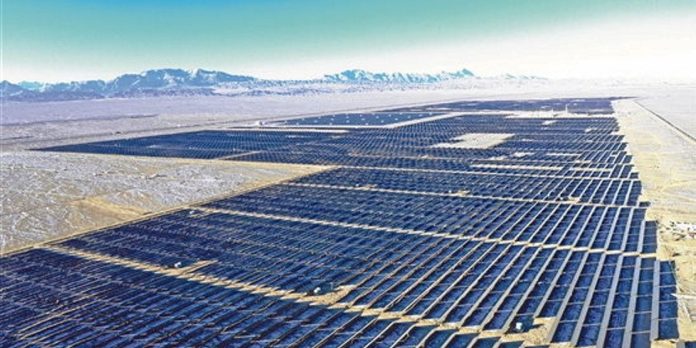China’s largest onshore oil and gas operator PetroChina has won government approval to build a major solar-to-hydrogen project in the country’s northwest China’s Gansu province, the first of many such projects to be constructed at the company’s existing domestic onshore fields.
The approval has enabled PetroChina to sign a contract with China Petroleum Engineering & Construction Company (CPECC) to start engineering, procurement and construction work.
CPECC is the contractor arm of PetroChina’s parent company China National Petroleum Corporation (CNPC)。
Scheduled for completion at the end of next year, the project envisages construction of four water electrolysis hydrogen production units each with capacity of 1000 cubic metres per hour.
When completed in late 2024, the project will be able to produce 2100 tonnes per annum of green hydrogen.
The photovoltaic power generation module has a photovoltaic installed capacity of 30 megawatt peak for hydrogen production by electrolysis.
The annual average power generation capacity is 50,578 megawatt hours. It is equipped with a 35 kilovolt transmission line. The transmission line is connected from a photovoltaic substation to the hydrogen production units.
Located at PetroChina’s mature Yumen oilfield, the project will also involve the construction of an export pipeline, extending 6.7 kilometres from the hydrogen units to the Yumen refinery and a local chemical industry zone, where hydrogen will be utilised as feedstock.
Other offsite facilities will include a hydrogen production laboratory and storage tanks.
CPECC said the project is parent company CNPC’s first involving large-scale electrolysis water hydrogen production.
“It is a demonstration project for PetroChina to expand the wind-solar hydrogen and storage integrated industrial park at its onshore fields,” CPECC said.
CPECC’s workscope covers the EPC services for alkaline water electrolysers, a gas-liquid separation device, processing unit, high and low-pressure hydrogen compressor, storage tank and other public utilities.
Two years ago, CPPEC completed a major 200 MW photovoltaics power generation project at the Yumen oilfield with capacity, which saved the use of 114,300 tonnes of coal and 281,000 tonnes of carbon dioxide emissions.
As one of China’s veteran onshore fields, Yumen has long passed its production plateau with oil output last year recorded at slightly above 10,000 barrels per day.
PetroChina has listed Yumen as one of six bases for developing renewable energy — others are located at its mature fields including Daqing, Jilin and Liaohe.
PetroChina vice president Jiao Fangzhen said in its low-carbon transition, the company will focus more on the development of solar, wind and hydrogen energy while continuing to pursue natural gas exploration and production.
The company has a stated aim for net-zero CO2 emissions by 2050 as part of its green development strategy.
Compatriot Sinopec early this month started operation of what it claims to be the world’s largest solar-to-hydrogen project and which is located in northwest China’s Xinjiang region.
The project, equipped with 52 electrolyser sets, each with capacity of 1000 cubic metres per hour of hydrogen, produced by passing electricity through water, will reduce CO2 emissions by 485,000 tpa.
The 3 billion yuan ($417 million) project features a 300 MW photovoltaic plant, a 20,000 tpa hydrogen electrolysis plant and a hydrogen storage tank farm with capacity of 210,000 cubic metres.
China is already the world’s top hydrogen producer, with output of around 20 million tpa, most of which is grey hydrogen produced from reforming and naphtha cracking units, or gas refinery byproducts.
A recent white paper from the China Hydrogen Energy Alliance noted that China’s demand for hydrogen will increase to 35 million tpa in 2030, before growing to 60 million tpa by 2050, when it will account for 10% of the energy demand mix.






